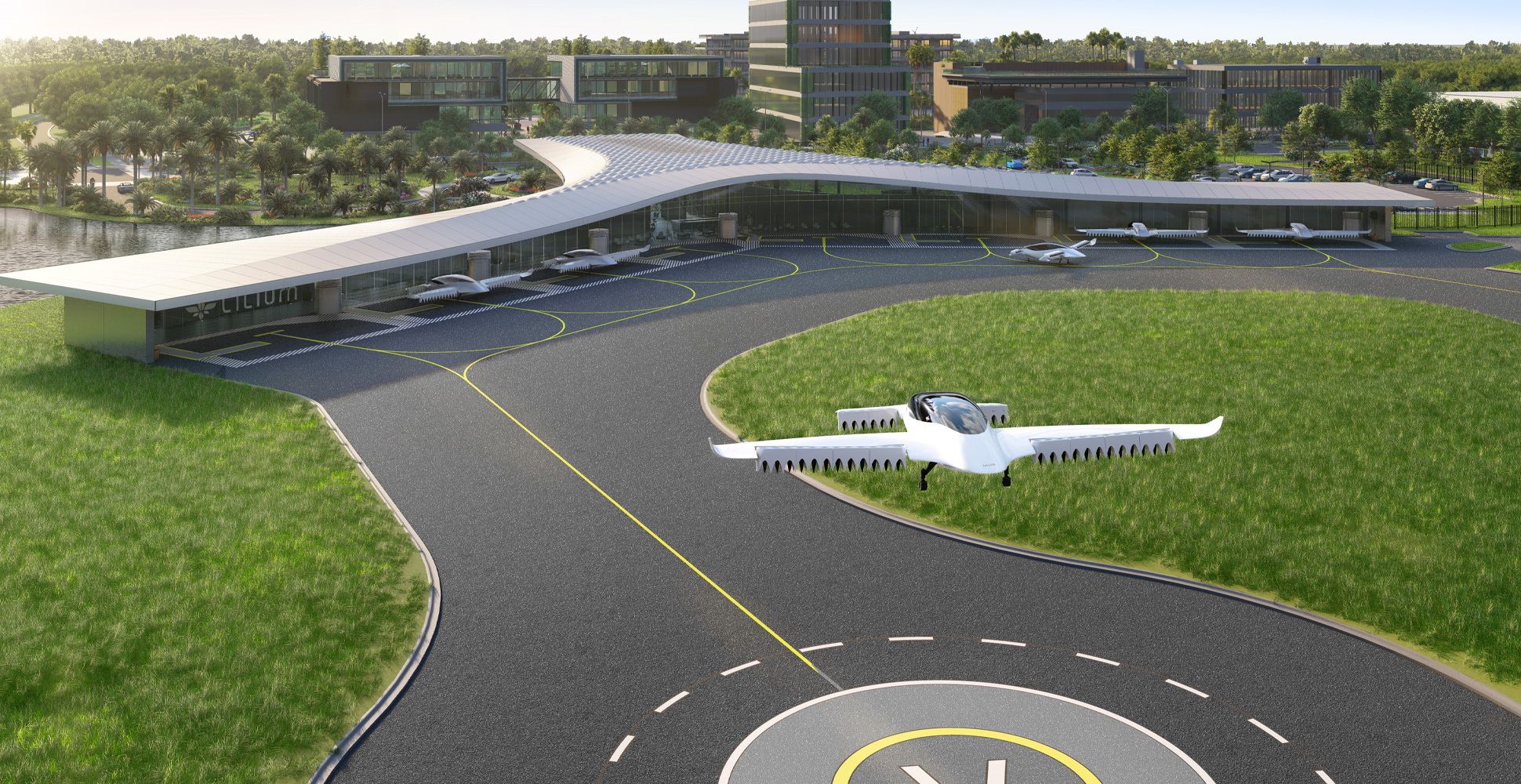Electric aircraft developer Lilium has chosen Lake Nona in Orlando, Florida, for the location of the first U.S. hub in its proposed electric air mobility network. The company, which is headquartered in Munich, Germany, is partnering with Orlando-based Tavistock Development Company to build the Lake Nona “vertiport.” Lilium is targeting 2025 for the launch of its electric vertical takeoff and landing (eVTOL)-based air taxi service.
“We are thrilled to partner with Tavistock and build the first stretch of Florida’s high-speed electric transportation network with Central Florida at its core,” said Lilium COO Remo Gerber. “It shows that regional high-speed air mobility can be built by private initiative and give communities such as Lake Nona, which can also serve Orlando and arrivals from its international airport, the ability to determine themselves whether they want a link into a high-speed transportation network.”
As previously reported by AVweb, Lilium officially introduced its five-seat Lilium Jet eVTOL prototype in May 2019, noting that it had already begun flight testing the model. The aircraft is expected to have a top speed of 300 km/h (162 knots) and a range of 300 km (162 NM). A two-seat prototype underwent flight testing in 2017.




































“The aircraft is expected to have a top speed of 300 km/h (162 knots) and a range of 300 km (162 NM).”
Sadly, the story does not disclose the speed at which the maximum (still air) range is obtained, nor the surplus flight duration available after attaining that (expected) range.
Nonetheless, this is a very interesting project. I wish them every success, and look forward to hearing additional news.
The video, although dated, certainly shows the machine hovering. Shows more practicality, even in early prototype stage, than others that I have seen. Certainly, a more “out of the box” approach to vertical, controllable lift using proven ducted fan technology rather than a bunch of exposed rotors. An interesting mix of old ideas applied in a new way.
Nice to see a real, flying prototype vs the usual virtual reality fantasy so often offered by others. They seem to be taking a measured approach which, like Pipestrel, willing to put themselves into the public’s eye with flying prototypes. That takes a lot of courage and confidence in the technology both companies are developing. I wish them success and look forward to the refinement process as they move forward.